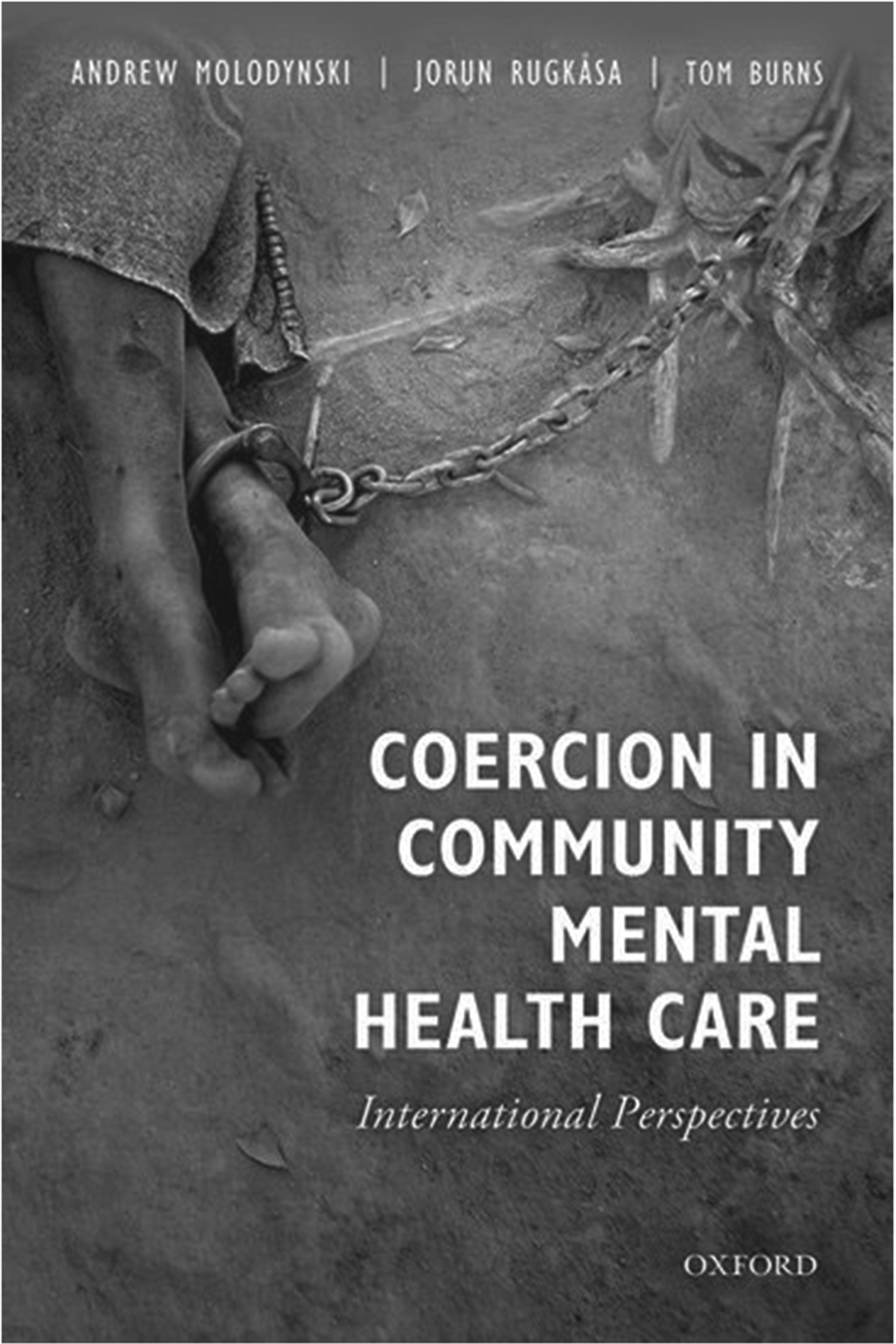Frequent readers of this journal might recall the image of Pinel removing the chains of lunatics in 1793 Paris that marks the beginning of the asylum era. By the 1950s, asylums were notorious for abuses leading to campaigns to shut them down. Community mental healthcare was deemed to be the appropriate solution, but was it really?
This book provides the necessary theoretical and empirical exposition of existing formal and informal coercive practices in community mental healthcare. It incorporates international perspectives within a multidisciplinary overview with the perspectives of history, law, sociology, anthropology and medicine, ensuring there is something new for every reader. Its five sections are: origins and extent, evidence, experience, context and international perspectives. The last section, being the namesake of the book, might benefit from a greater word count.
As alluded to on the book cover, in many low- and middle-income countries, pre-Pinel shackling of those who are mentally ill is still in practice, along with a host of other cruel practices that Arthur Kleinman considered a failure of humanity. Representing 40% of the world's population, three of the world's largest low- and middle-income countries have recently renewed their mental health legislations to focus on a human-rights-based approach: China (2012), India (2013) and Indonesia (2014). The question remains whether the new legislations had any impact on eliminating coercive practices within these three countries.
Although the variety of international accounts is valuable, the book referenced Indonesia's 1993 health law rather than the 2014 mental health law, leading to questions on whether the information presented is up to date. Readers may also be surprised that Taiwan, China and Japan were classified as part of Southeast Asia. I was nonetheless fascinated by China's 686 Model, mentioned in the book, an example of successful partnership between the public service and international academics, leading to the development and countrywide implementation of community mental healthcare in less than 15 years.
The book draws attention to the fact that coercion takes many shapes, and occurs also in high-income countries such as the UK and the USA. In daily practice, mental healthcare has multiple stakeholders with their own competing interests. Coercive actions are almost always intended to be utilitarian: for the greater good of the society. Although the greater good is important, other moral principles, such as virtues and human rights, must never be forgotten.




eLetters
No eLetters have been published for this article.